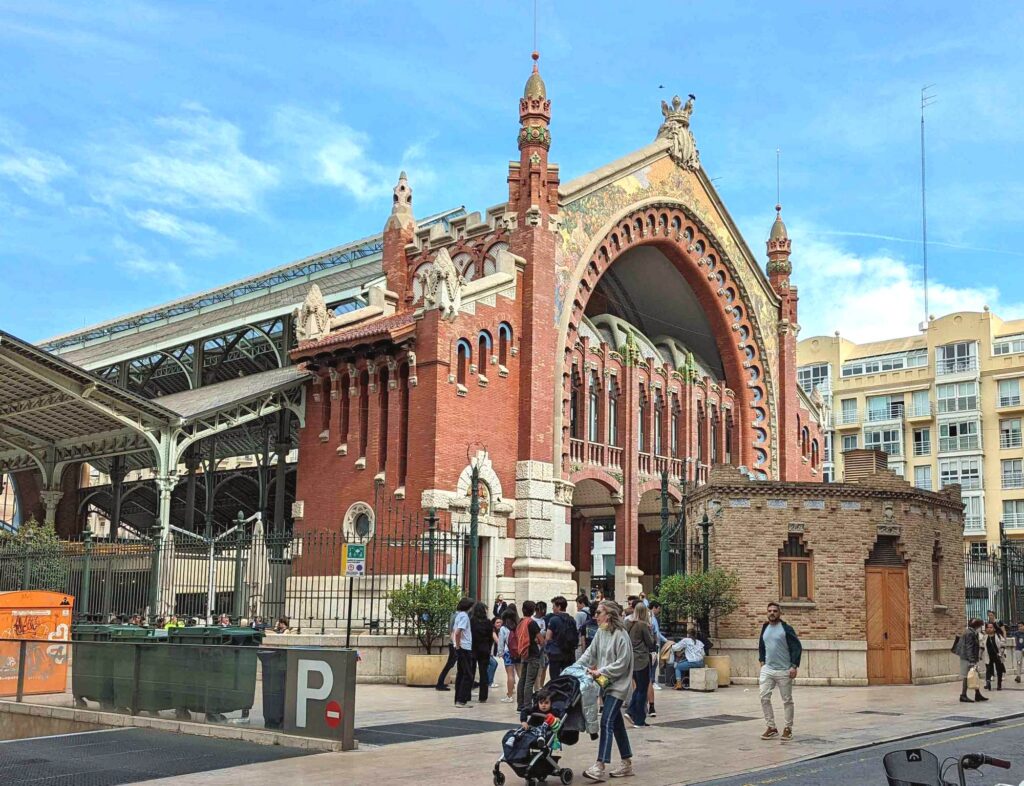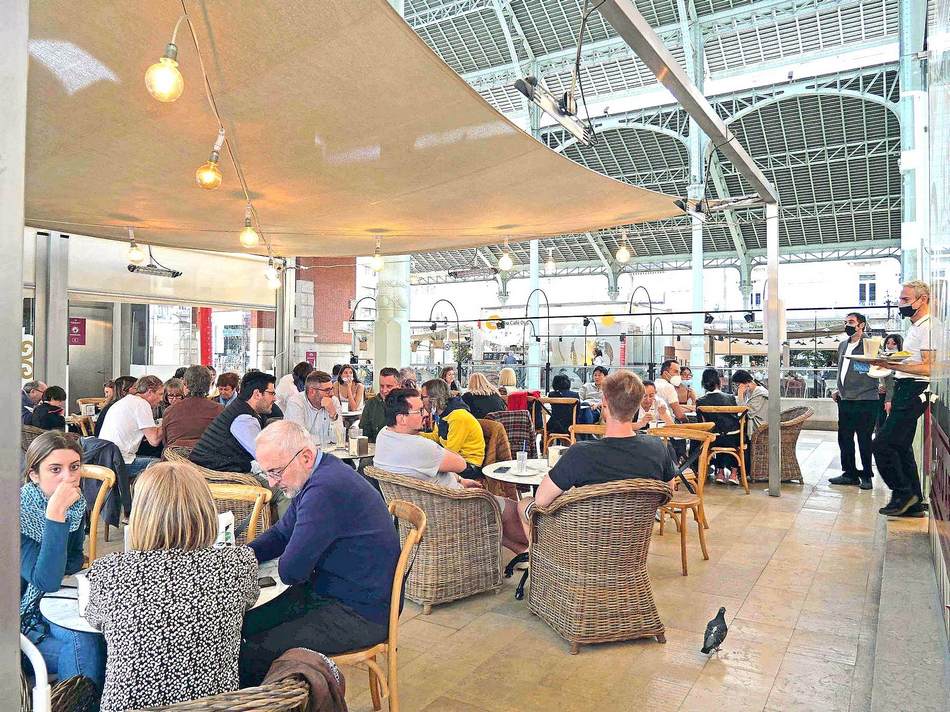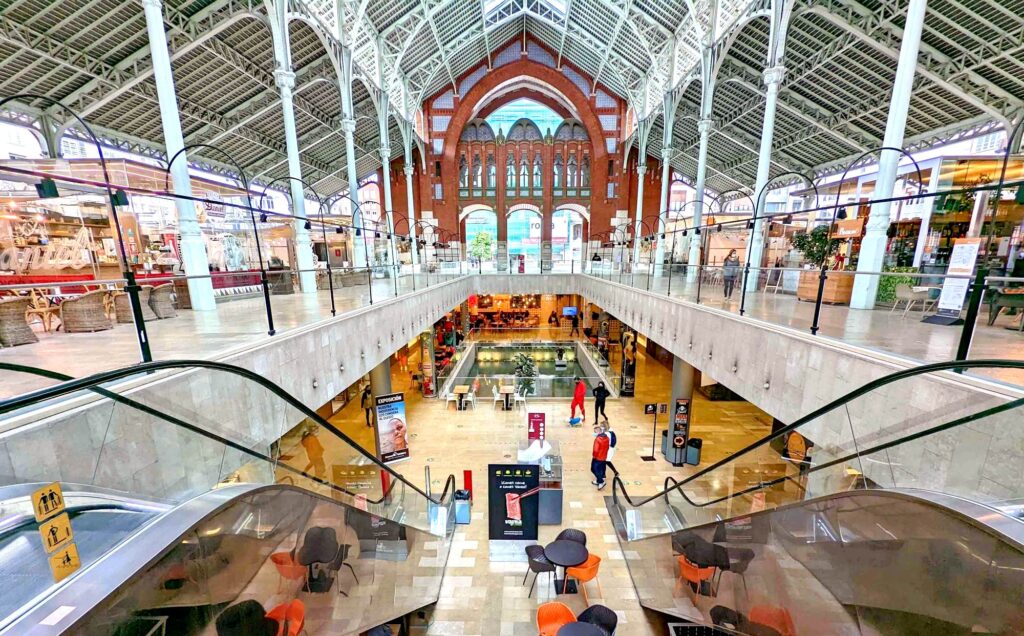
Valencia may not have the sheer number of buildings in the Modernisme style as Barcelona, but it does boast its own regional wrinkle of Art Nouveau. Valencianos reserved their most flamboyant structures of modernismo valenciano for the essentials of daily life. That includes the main post office, the train station, and two of the city markets. Had the city not built a neoclassical bullring a few decades earlier, the Plaza de Toros probably would have been Art Nouveau too.
We’ve already written extensively about the Mercado Central, but the even more refined example of modernismo valenciano is Francisco Mora Berenguer’s Mercado Colón. Mora studied under Domènech i Montaner, arguably second only to Gaudí among Barcelona’s Modernisme architects. The Valenciano architect drew on some of the same neo-medieval references in his decorative elements. The building has been declared a national monument.

But like so many municipal markets in Spanish cities, the Mercado Colón (Carrer de Jorge Juan, 19; +34 963 37 11 01, mercadocolon.es) has been transformed to house more eating and drinking establishments than food stalls. Mora’s soaring train shed-style architecture with open sides at ground level makes the market a dramatic indoor space that feels outdoors. The sheer airiness has made it popular for social drinking and dining through the pandemic. (Valencianos take public health very seriously, but they do welcome a chance to mingle with good air flow.) True to the city’s gastronomic traditions, the market has seven cafés and cervecerías along with not one, but two horchaterías (Daniel and Casa Orxata). We’ll talk about Valencia and horchata a bit in the next post.
If you go down the escalator to the lower level, you can even still buy gourmet quality meat, cheese, fish, and fruits and vegetables.

